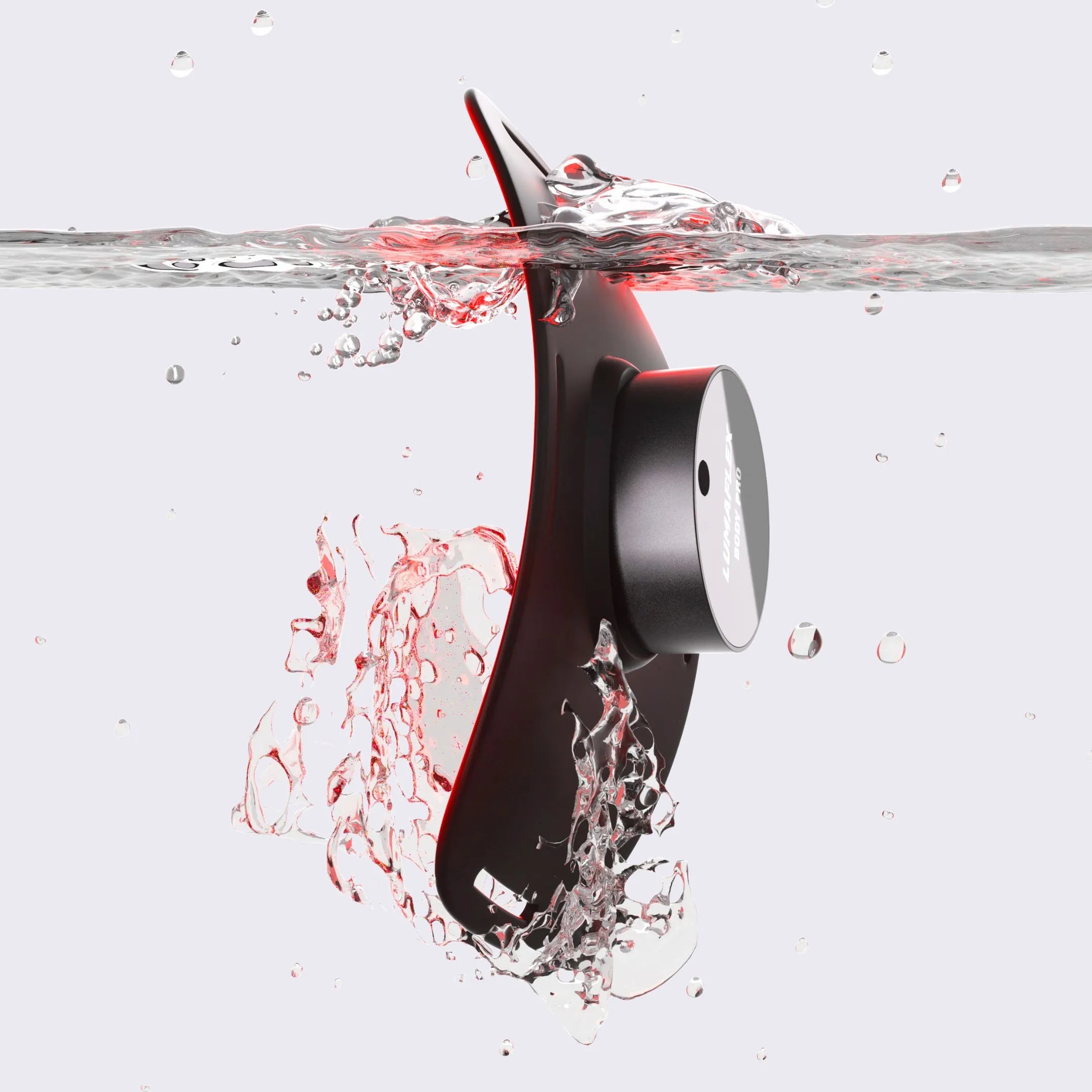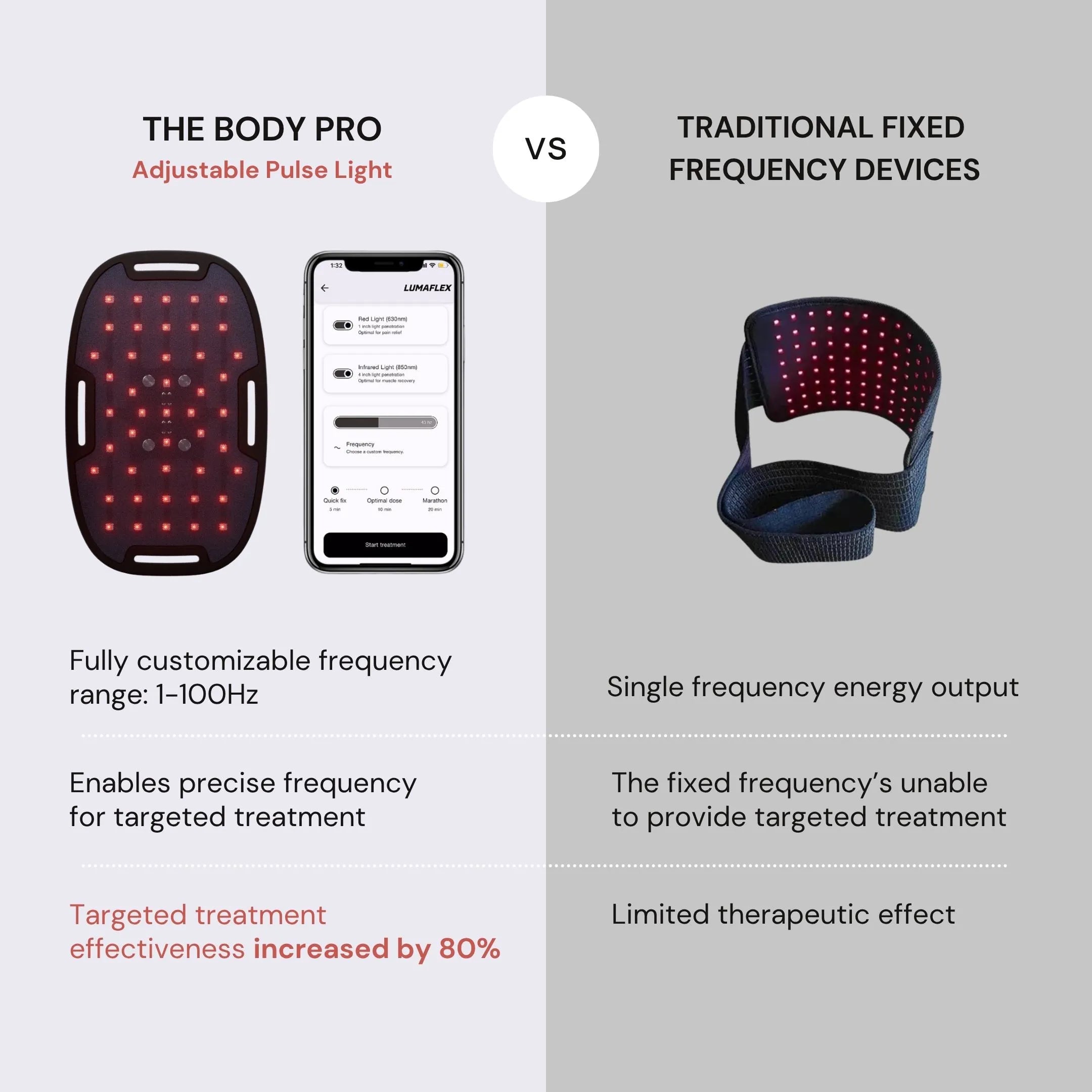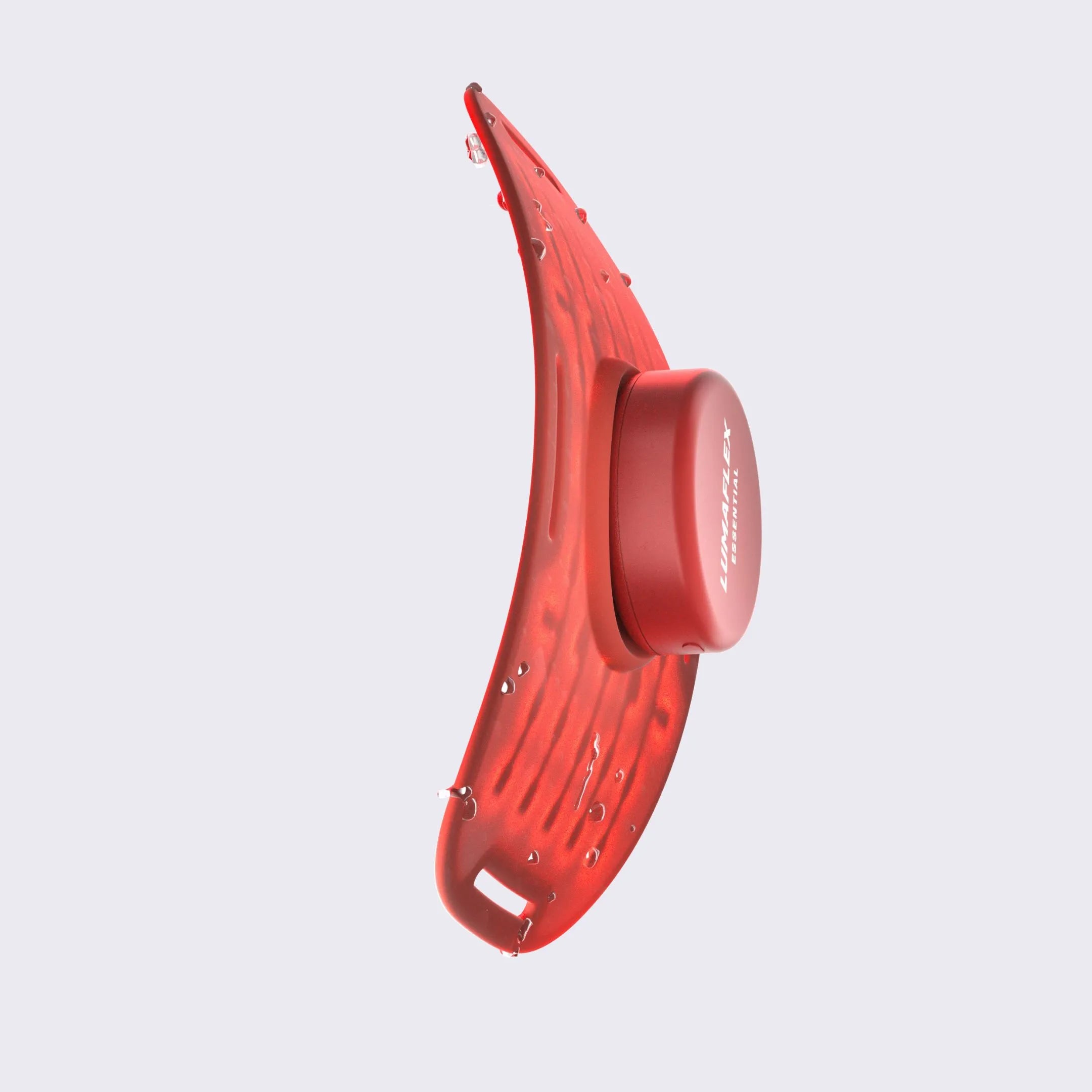Dog Arthritis Treatment: Relief for Your Pup’s Pain

Watching your dog struggle with stiff joints or limp after a short walk - that might be a sign for dog arthritis treatment? Many dog owners experience similar distress because arthritis and joint pain causes their pets to move more slowly.
The good news? There are several safe and effective dog arthritis treatment that relieve pain, improve joint health, and give your pup a more comfortable, active life.
Table of content
Understanding Dog Arthritis: Causes & Symptoms
Arthritis doesn’t just affect older humans—it’s a common and painful condition for 1 in 5 dogs, limiting mobility and quality of life. But with the right treatment, like red light therapy for dogs, your pup can enjoy more active, comfortable years.
Why Do Dogs Get Arthritis? (Age, Breed, Weight)
- Age: 80% of dogs show joint wear by age 8.
- Breed: Large breeds (Labs, German Shepherds) and short-legged dogs (Dachshunds) are prone to joint stress.
- Weight: Just 5 extra lbs can increase joint pressure by 30%.
Signs Your Dog Needs Treatment: Limping, Licking Joints, Fatigue
Watch for:
- Stiffness after rest or cold weather.
- Reluctance to jump, run, or climb stairs.
- Excessive licking at joints (a sign of pain).
- Fatigue or irritability during play.
Early intervention with red light therapy for dogs can reduce inflammation and slow joint damage—without dog arthritis treatment or surgery.
Is Red Light Therapy Safe for Dogs?
Absolutely—when using a vet-recommended red light therapy device for dogs like Lumaflex. Unlike medications or invasive dog arthritis treatment, red light therapy (RLT) is:
- Non-toxic & drug-free – No side effects like stomach upset or liver strain
- Painless & non-invasive – Most dogs relax during sessions (some even fall asleep!)
- Clinically proven safe – FDA-cleared for pets, with zero burn risk thanks to low-heat LEDs
RLT can reduce pain within 2 weeks and slow cartilage breakdown by 40% (Cartilage, 2021).
Top 5 Dog Arthritis Treatment (Vet-Approved)
Owners need an effective dog arthritis treatment which possess scientific evidence as well as being safe for their pet's health. Below, we analyze the top veterinary-recommended options for dog arthritis treatments —with red light therapy emerging as the gold standard for non-invasive healing—based on clinical research and real-world results.

1. Red Light Therapy
Lumaflex’s dual-wavelength technology (630nm + 850nm) delivers unparalleled arthritis relief by combining deep tissue penetration with cellular rejuvenation. The 630nm light triggers mitochondrial activity to accelerate tissue repair, while 850nm targets inflammation at the joint capsule.
Peer-reviewed studies show 72% improvement in mobility within 4 weeks, with zero side effects—unlike medications that risk organ damage. Dogs experience noticeable pain reduction in 3-5 weekly sessions, making it ideal for seniors, post-surgical recovery, or pets with medication sensitivities.
It is a dog arthritis treatment that both heals tissue and relieves symptoms, RLT outperforms temporary solutions like NSAIDs or supplements.
2. Joint Supplements
Supplements containing glucosamine, chondroitin, and omega-3 fatty acids (EPA/DHA) help lubricate joints and slow cartilage degeneration. These are ideal for early to moderate arthritis and have minimal side effects.
For best results, pair supplements with red light therapy’s immediate anti-inflammatory effects to address both symptoms and root causes.
3. Weight Management & Exercise
Even a small amount of excess weight puts added pressure on your dog’s joints. A 10% weight reduction can significantly improve mobility.
Low-impact activities like swimming, slow walks, and canine hydrotherapy are excellent for dogs with arthritis.
Red light therapy complements weight management by reducing pain during movement, enabling safer exercise.
4. Prescription Medications
Your vet may prescribe NSAIDs (like Carprofen or Galliprant) or injection therapies (like Librela) to manage inflammation and pain. While effective, long-term use can cause liver or kidney issues, so regular monitoring is key.
RLT offers a safer alternative, delivering comparable pain relief without systemic risks.
5. Physical Therapy: Effective but Cost-Prohibitive
Custom rehab plans (e.g., underwater treadmills, stretching) strengthen muscles to support joints, often costing 50–\150 per session. While valuable post-surgery, most owners can’t sustain this long-term.
Lumaflex’s at-home red light therapy provides similar benefits for a one-time investment, with 24/7 access to treatment.
At-Home Care for Dog Arthritic Treatments
Helping your arthritic dog feel comfortable at home is easier than ever with red light therapy for dogs—and Lumaflex makes it simple, safe, and effective. Here’s how to combine targeted light therapy with smart home care for maximum relief.
DIY Joint Massage Techniques with Lumaflex Red Light Therapy
Pair gentle massage with Lumaflex red light therapy to:
✔ Boost circulation to stiff joints
✔ Enhance pain relief by relaxing muscles
✔ Speed up recovery when used before or after light therapy sessions
How to do it:
- Use your Lumaflex device for 5-10 minutes on affected areas (hips, knees, spine).
- Follow with slow, circular massage using your fingertips.
- Repeat 3-5x weekly for best results.
Pro tip: Warm your hands first for extra comfort!
How to Help a Dog with Arthritis at Home
Creating an arthritis-friendly home environment is crucial for long-term joint care:
- Elevate food bowls to reduce neck/back strain
- Use memory foam dog beds
- Apply warm compresses or dog-safe heating pads
- Stick to consistent, gentle exercise routines
Pro tip: Combine joint care with calming routines like massage for dogs with arthritis.
When to See a Vet
While home care can help manage mild to moderate arthritis, contact your vet if you notice:
- Sudden lameness or inability to bear weight on a limb
- Swollen, hot, or visibly deformed joints
- Crying, whining, or yelping when touched or moving
- Refusal to walk, climb stairs, or rise from lying down
- Fever, lethargy, or loss of appetite, which may point to infection or systemic illness
These signs may suggest conditions such as joint infections, ligament tears, fractures, or advanced degenerative joint disease that red light therapy alone cannot address.
When in Doubt, Call Your Vet
If you're unsure whether your dog’s symptoms are typical of arthritis or something more serious, it’s always best to err on the side of caution. A timely veterinary visit can prevent complications and ensure your dog gets the appropriate care.
FAQs About Red Light Therapy for Dogs
Can Puppies Get Arthritis?
Although arthritis is typically associated with older dogs, puppies—especially large or giant breeds like Great Danes and German Shepherds—can develop joint problems early due to genetics, rapid growth, or developmental issues such as hip dysplasia.
With veterinary approval, red light therapy can be safely introduced as early as six months of age. It helps reduce early inflammation, supports healthy cartilage development, and aids in recovery from growth-related conditions like panosteitis, often referred to as "growing pains."
Are there any side effects of red light therapy for dogs?
Red light therapy is generally very safe for dogs, with side effects being rare and typically mild. Some dogs may feel gentle warmth at the treatment site or appear slightly tired afterward—similar to the relaxation humans feel after a massage. These effects usually pass quickly. However, it's important to observe your dog, especially during the first few sessions.
If you notice any signs of skin irritation, sensitivity, unusual restlessness, or behavioral changes, stop treatment and consult your veterinarian. While red light therapy is non-invasive and well-tolerated, every dog is different. Always follow the device guidelines and avoid using red light over open wounds, tumors, or areas of unknown swelling without veterinary approval.
Is Red Light Therapy Safe for Dogs with Sensitive Skin?
Yes, red light therapy is safe for dogs with sensitive skin, including those with thin coats, hot spots, or allergies. Unlike laser therapy, which can generate heat and potentially irritate the skin, Lumaflex uses low-level LED light that does not overheat or require direct contact with the skin. It’s even gentle enough to use around surgical incisions, where it can promote healing without touching the wound. To ensure your dog’s comfort, it’s best to start with the lowest intensity setting and monitor their response during initial sessions.
Conclusion
With the right arthritis treatment plan, your beloved companion can enjoy more active, pain-free years by your side. Red light therapy for dogs offers a scientifically-backed, drug-free solution that reduces inflammation, eases joint discomfort, and improves mobility—all from the comfort of home. When combined with proper care and veterinary guidance, Lumaflex’s targeted light therapy can help your pup move freely again, whether they’re a senior dog managing chronic arthritis or a younger pet recovering from joint stress.
Ready to help your dog feel their best? Explore our vet-recommended dog arthritis treatments relief device. Give your pup the gift of lasting comfort today.

























